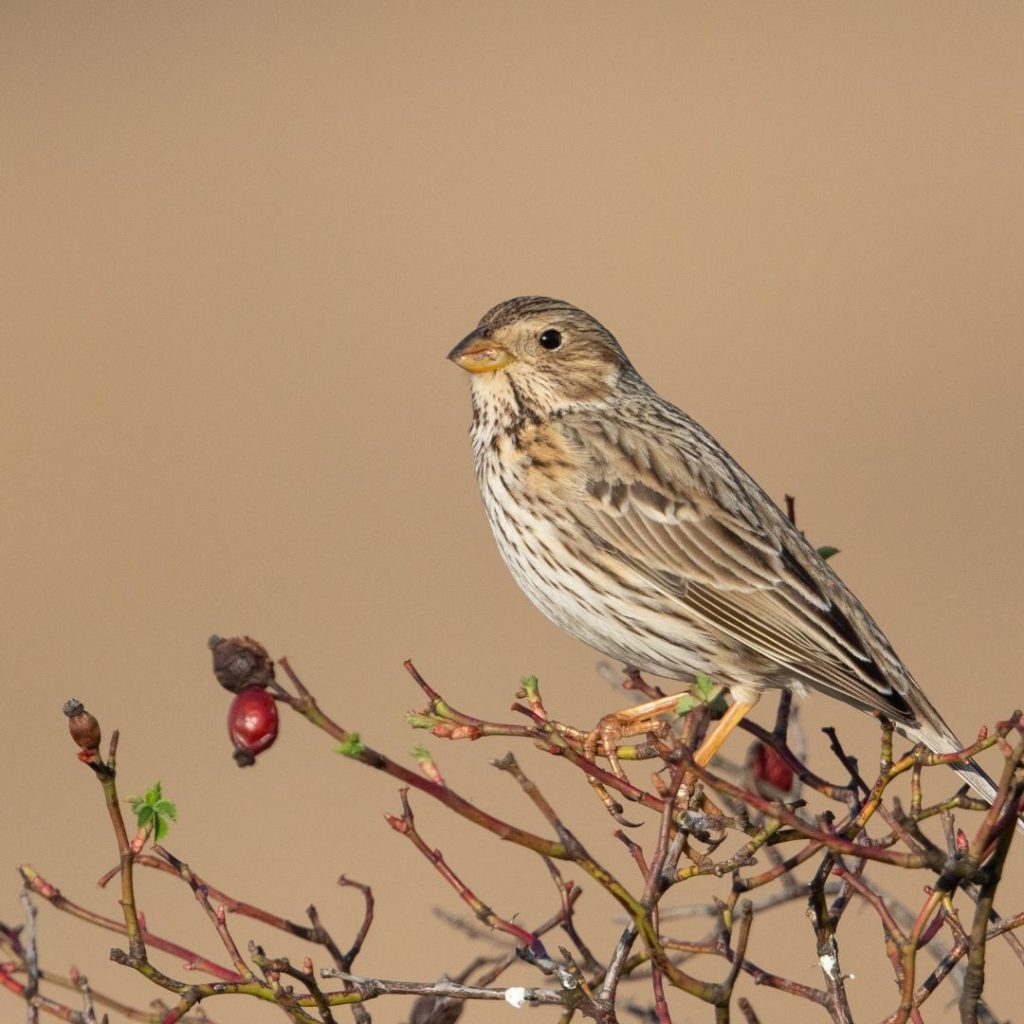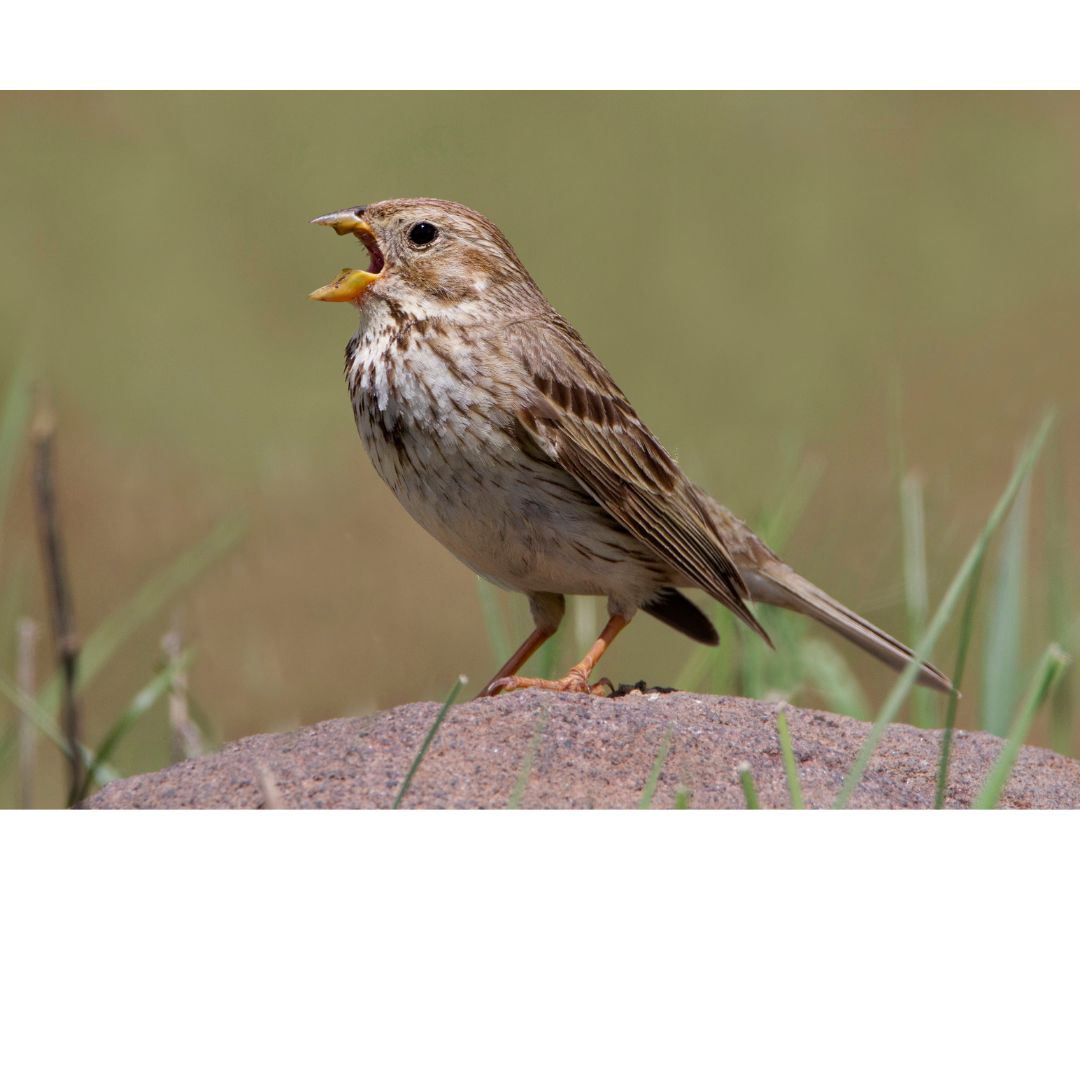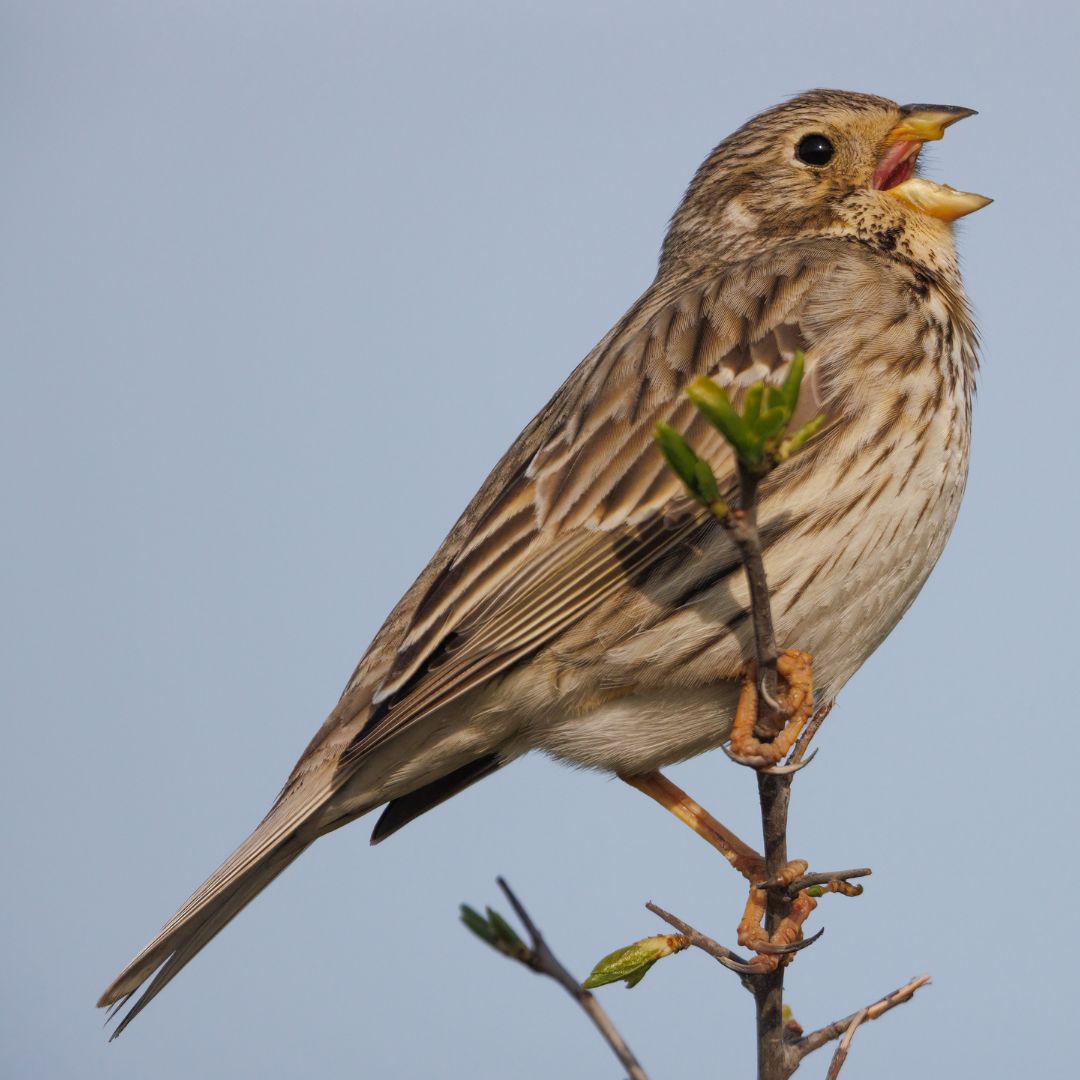Bird of the Year 2024: The Corn Bunting

Nine out of ten corn buntings have disappeared in the last 25 years. The farmland bird is on the brink of extinction. Intensive farming, a lack of fallow land and field margins as well as the massive use of pesticides are causing this negative development. This is why the bird conservation organization BirdLife Austria has chosen the corn bunting (Emberiza calandra) as Bird of the Year 2024.
The breeding population of the corn bunting has suffered a massive decline in the last 25 years:
From 1998 to 2022, the population index of the inconspicuous gray and brown dotted bunting collapsed by 95 percent (source: Brutvogelmonitoring 2022, https://www.birdlife.at/page/monitoring-der-brutvogel). This is the sharpest decline of all bird species evaluated in the monitoring. The current breeding population is likely to be less than 500 territories, says Michael Dvorak, research associate at BirdLife Austria: "It may even be well below this figure!"
Distribution islands within Austria
As a breeding bird of the Pannonian climate region, the corn bunting breeds in small islands in the eastern Weinviertel (Lower Austria), in the Marchfeld (Lower Austria), on the Parndorfer Platte (Burgenland) and in the Lake Neusiedl area (Burgenland). The most important breeding area in Austria is the Hanság (Burgenland): 50 territories were mapped here in 2022. Outside of these areas, the corn bunting has disappeared throughout Austria apart from a few small relict populations.
Once these wastelands are gone, so is the corn bunting!

This massive population decline correlates significantly - both in Austria and in other parts of Central Europe - with the intensity of agricultural use, which has been identified in numerous studies as the main factor in the decline of farmland bird species. The species-rich fallow land occupies a key positive position as a food source and nesting site throughout the year.
Photo ©️ Birdlife/Michael Dvorak
"As a bird that once characterized the open, extensive agricultural landscape, the corn bunting needs a certain proportion of unused land. Such fallow or ruderal areas should make up at least ten percent of the area so that a viable corn bunting population can survive. If these fallow areas are gone, the corn bunting is gone too," Dvorak clarifies.
The preservation of those areas temporarily taken out of economic use as well as the completely uncultivated field margins, ditch edges or property boundaries could still prevent the extinction of the annual bird in 2024.
A look back and a glimmer of hope

"It turns out that the corn bunting reached much higher population densities in periods with higher, up to ten percent, EU-wide set-aside rates, as was the case until the end of the 1990s," says the ornithologist. Fortunately, the fallow land
are also increasing again somewhat thanks to the support measures of the new Austrian agri-environmental program.
Cover photo and bottom photo ©️ Birdlife/ Anita Hombauer






